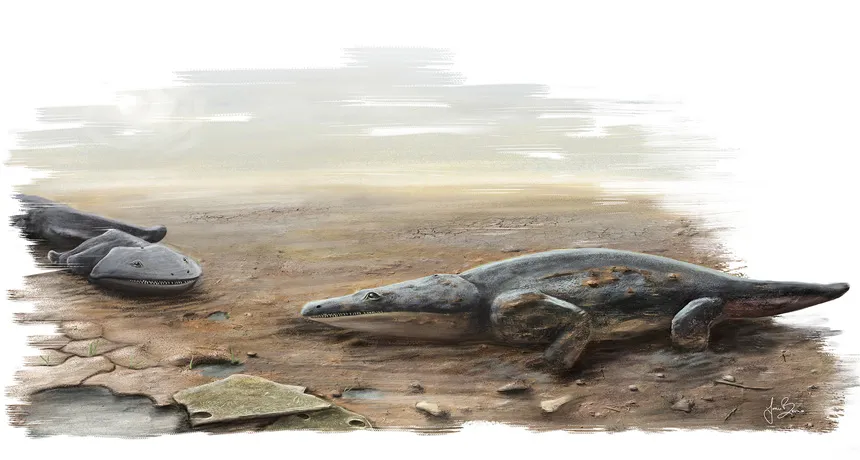Fossil of monstrous fish-eating amphibian unearthed
Newly discovered species was toothy Triassic predator

FEAR THE AMPHIBIANS Fossils of a new species of 2-meter-long predatory amphibian, shown in this artist’s illustration, were discovered in an ancient lake bed in southern Portugal.
Joana Bruno